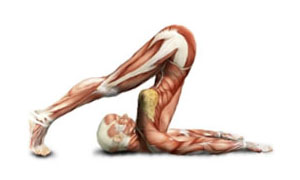Benefits of Regular Stretching
Many years ago while practicing in Chicago I participated in a research program to determine effective stretching.

We concluded that stretches of longer duration with less force were much more beneficial. This concept is widely accepted today. Certainly, some people have greater natural flexibility and are less prone to injury.
Those who are genetically stiffer and tighter require more care when stretching.
It is beneficial to stretch muscles whether in the legs, shoulders or back. Stretching aids athletic function but is just as affective to prevent back and postural problems during long periods of inactivity.
Stretching during long periods of sitting mediates pain and stiffness, improves blood flow, mobilises nerve roots and improves metabolism of the internal organs. Short periods of stretching while sitting at a computer or desk-40-60 seconds every 30-60 minutes - can be very affective.
Poor flexibility is a combination of contracted tendon and muscle fibres, restricted joints, imbalance between muscle producing movement and muscle acting as a stabiliser and over firing within the nervous system.
To redress muscle tension I favour correcting joint restriction, restoring function (strength) to muscles that act in opposition to a tight muscle and balancing the function of the nervous system.
If we take a tight hamstring muscle as an example – I would correct the position of the lumbar spine segments and sacroiliac joints-releasing these areas can add 2-3 inches to hamstring length. Then check for inhibition of the Psoas muscle deep in the groin.
This muscle and associated structures is a junction box. Massage and trigger point release can reduce spasm of this muscle and restore balance of nerve stimuli for correct function. Gluteal and hip rotator muscle function should also be assessed.
I favour soft stretching, mild oscillation with intermittent deep stretch of no more than 5-10 seconds. Avoid pain, excess tension and fatigue. Research suggests forced long duration stretching can damage muscle and tendon fibres, weaken the enthesis - the tendon to bone attachment - and may increase risk of injury during activity. Muscle weakness can occur and there can be an inflammatory response affecting muscle fibres. If considering two opposing muscles, where one is weak, the other may be contracted. Strengthening the weaker muscle will reduce tension in the tighter muscle.
Consultations and Treatment from £95*
Appointments
07850 699534
*More complicated conditions may require
longer consultations and additional cost